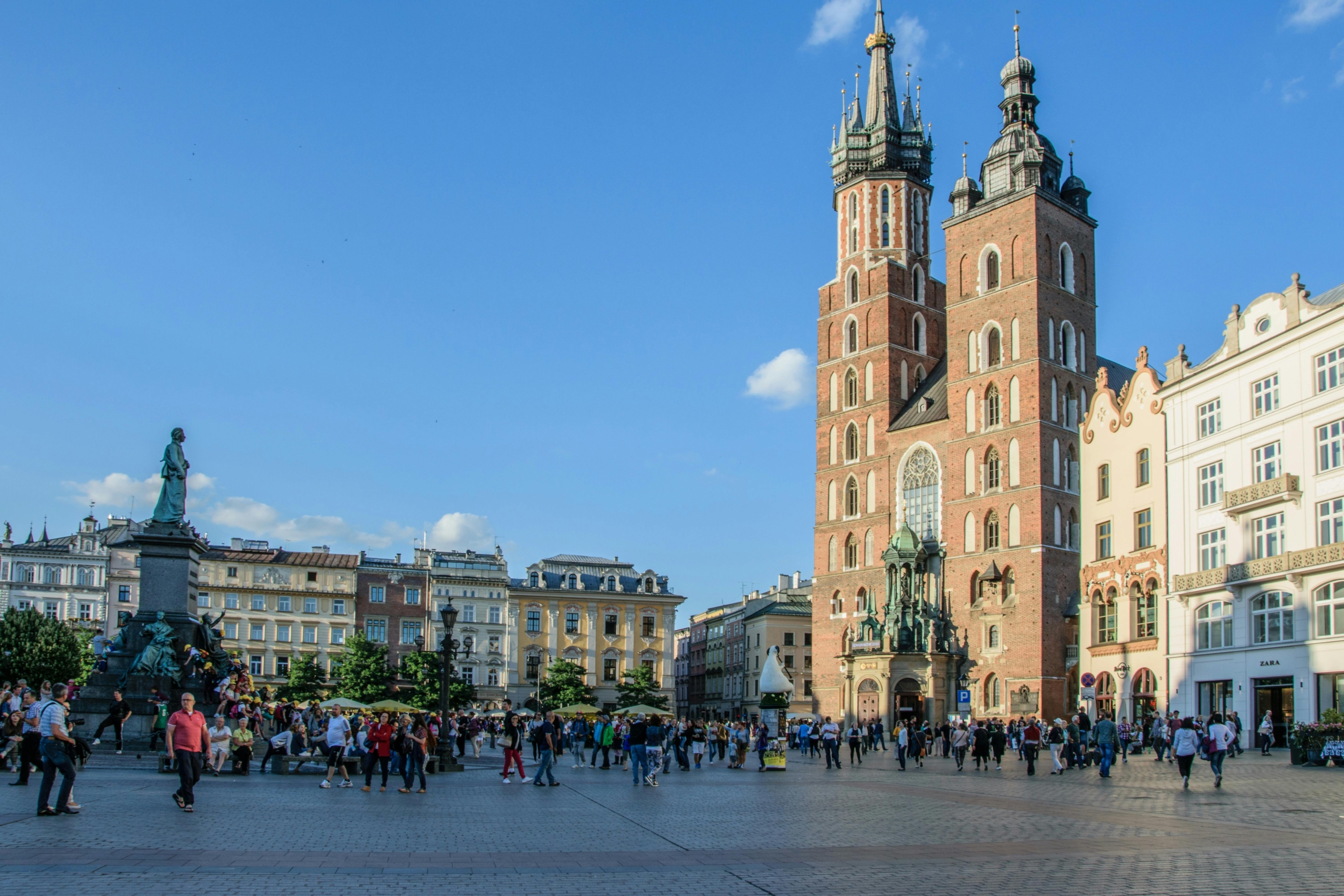Kraków, one of Poland’s most historic and vibrant cities, is a fascinating destination filled with rich cultural heritage, stunning architecture, and a dynamic atmosphere. Located in southern Poland, along the Vistula River, Kraków has long been regarded as the country’s intellectual and artistic hub. Here are some essential facts about this remarkable city.
1. The Former Capital of Poland
Kraków was the capital of Poland from 1038 until 1596, when King Sigismund III Vasa moved the capital to Warsaw. Despite losing its status as the capital, Kraków remains a crucial cultural and academic center. The city continued to serve as the coronation and burial site of Polish monarchs at Wawel Cathedral, reinforcing its historical importance. Even after the political shift, Kraków remained an economic and intellectual hub, attracting scholars, artists, and merchants from across Europe. Today, it stands as a symbol of Poland’s rich heritage, with its well-preserved medieval core and numerous landmarks drawing millions of visitors each year.
2. UNESCO World Heritage Site
The historic Old Town of Kraków, including Wawel Castle and the Jewish Quarter (Kazimierz), was among the first sites to be added to the UNESCO World Heritage List in 1978. The city’s well-preserved medieval core and impressive landmarks make it a top tourist destination. The decision to include Kraków on the list was based on its historical significance and the outstanding universal value of its architectural heritage. Walking through the Old Town, visitors can admire the blend of Gothic, Renaissance, and Baroque styles, with landmarks like St. Mary’s Basilica and the Cloth Hall standing as testaments to its rich past. In addition to its architectural beauty, Kraków’s historic center remains a vibrant cultural hub, hosting numerous festivals, museums, and artistic events that celebrate its legacy.
3. Home to One of the Oldest Universities in Europe
The Jagiellonian University, founded in 1364 by King Casimir III the Great, is one of the oldest universities in Europe and a leading academic institution in Poland. It has educated many notable figures, including Nicolaus Copernicus and Pope John Paul II. The university has played a key role in shaping Poland’s intellectual and scientific landscape for centuries. It boasts a rich academic tradition and remains a hub for research in various disciplines, including astronomy, medicine, and law. The Collegium Maius, the university’s oldest building, is a stunning example of Gothic architecture and houses an impressive collection of historical artifacts, including medieval scientific instruments. Today, the Jagiellonian University continues to attract students from all over the world, maintaining its reputation as one of Europe’s most prestigious higher education institutions.
4. Wawel Castle and the Legend of the Dragon
Wawel Castle, perched atop Wawel Hill, is one of Poland’s most significant historical sites. According to legend, the Wawel Dragon (Smok Wawelski) once lived in a cave beneath the castle and terrorized the city until a clever shoemaker tricked it into eating a sheep filled with sulfur, ultimately causing its demise.
5. Rynek Główny – The Largest Medieval Market Square in Europe
Kraków’s Main Market Square (Rynek Główny) is the largest medieval town square in Europe, covering approximately 40,000 square meters. The square is home to the famous Cloth Hall (Sukiennice) and St. Mary’s Basilica, from which a bugle call (Hejnał Mariacki) is played every hour. The bugle call, which suddenly cuts off, commemorates the legendary trumpeter who was shot while warning the city of an approaching Mongol invasion. The square is lined with historic townhouses, bustling cafes, and street performers, making it a lively social and cultural hub. Beneath the square, visitors can explore the Rynek Underground Museum, which showcases Kraków’s medieval history through archaeological exhibits. The Main Market Square also serves as the center for seasonal markets, festivals, and public events, attracting both locals and tourists throughout the year.
6. A City of Festivals
Kraków hosts numerous cultural and artistic events throughout the year, including the Jewish Culture Festival, the Kraków Film Festival, and the Conrad Festival, which celebrates literature. These events attract artists and intellectuals from around the world.
7. Kazimierz – The Historic Jewish Quarter
Kazimierz, once an independent town, became part of Kraków in the 19th century. It served as the center of Jewish life for centuries before World War II. Today, it is a lively district filled with synagogues, cafes, and cultural sites, known for its unique charm and historical significance. The district is home to several historic synagogues, including the Old Synagogue, the Remuh Synagogue, and the Tempel Synagogue, each reflecting different periods of Jewish history. Before the Holocaust, Kazimierz was a thriving Jewish community, but much of its population was tragically lost during the war. In recent decades, efforts have been made to restore the district’s Jewish heritage, with festivals, museums, and cultural initiatives helping to revive its historical identity. Today, Kazimierz is a vibrant and artistic neighborhood, known for its bohemian atmosphere, eclectic bars, and thriving nightlife scene.
8. Oskar Schindler’s Factory
Oskar Schindler’s Enamel Factory, made famous by the film Schindler’s List, is now a museum that tells the story of Kraków during World War II. It showcases the experiences of the city’s Jewish population and Schindler’s efforts to save over 1,000 lives.
9. A Gateway to Auschwitz
Kraków serves as the main access point to Auschwitz-Birkenau, the infamous Nazi concentration and extermination camp located about 70 km from the city. The site stands as a somber reminder of the Holocaust and attracts visitors from around the world.
10. Kraków’s Vibrant Food Scene
Kraków is famous for its culinary traditions, including pierogi (dumplings), obwarzanek (a local bagel-like snack), and zapiekanka (a Polish-style baguette pizza). The city’s restaurants and street food markets offer a mix of traditional and modern flavors. Kraków is a city of history, legends, and cultural richness. Whether exploring its medieval streets, enjoying its artistic scene, or indulging in its culinary delights, Kraków offers an unforgettable experience. Its blend of past and present makes it one of Europe’s most captivating cities.
If you are looking for accommodation for a stay or vacation in Kraków, check out the offer of Apartments Krakow For You, located right next to the Main Market Square in Kraków – on Grodzka Street and Szczepańska Street. We invite you to stay with us!

